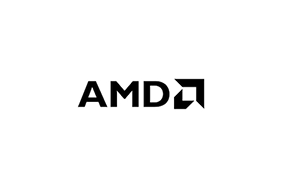Technology Collaborations and Innovations to Accelerate Climate Progress
By: Justin Murrill, Director, Corporate Responsibility at AMD
Published 11-21-22
Submitted by AMD

The annual United Nations Climate Change report - coinciding with the 27th United Nations Climate Change Conference (COP27) in Egypt - concludes that while countries are bending the curve of global greenhouse gas (GHG) emissions downward, accelerated progress and collaboration are critical to our planet’s future.
The semiconductor sector continues to play a key role to help efforts, especially in data centers that reside at the heart of the technology applications we use every day. As a leader in the semiconductor industry and in data center technology, AMD embraces the responsibility to help protect our planet and the opportunity to help others save energy and reduce their associated GHG emissions. Recent AMD innovations and collaborations underscore our commitment to advancing energy efficiency.
This month AMD launched 4th Gen EPYC processors that power the world’s most energy efficient x86 servers.[i] AMD EPYC processors are designed to meet application performance demands with fewer servers, resulting in less electricity use and related GHG emissions for IT infrastructure. As one potential example, it would take 1 million servers from the competition to deliver the same number of virtual machines as 318,000 AMD-based servers, representing an estimated 54% power reduction and up to 22 billion kilowatt hours over three years. Based on U.S. data, in that hypothetical situation the GHG savings would be equivalent to the carbon sequestration of 4 million acres of U.S. forest annually.[ii]
AMD has even bigger plans looking ahead with a bold goal to achieve by 2025 a 30x increase in energy efficiency for AMD processors and accelerators powering servers for high-performance computing (HPC) and artificial intelligence (AI)-training, from a 2020 base year.[iii] Our goal equates to a 97 percent reduction in energy use per computation by 2025. If all HPC and AI server nodes globally were to make similar gains, billions of kilowatt-hours of electricity could be saved in 2025 relative to baseline trends. Midway through 2022, we are on track toward achieving our goal.[iv]
While we are proud of this progress, we realize greater impact is more likely through collective efforts and innovations. So as a founding member, AMD recently joined the Semiconductor Climate Consortium (SCC). Its 60+ companies across the semiconductor value chain aim to accelerate the ecosystem’s reduction of GHG emissions through knowledge-sharing, increased transparency in public reporting, and ambitious decarbonization targets. Founding members affirm their support of the Paris Agreement and related accords driving the 1.5⁰C pathway and agree to help advance climate progress within the semiconductor value chain.
The world's largest industry coalition dedicated to corporate social responsibility - the Responsible Business Alliance (RBA) – is also increasing efforts to advance environmental sustainability. AMD is an elected member of the RBA Board of Directors helping guide its strategic direction, and recently joined its senior environmental advisory group to technically assist the alliance in accelerating sustainability in the supply chain.
Our company’s collaborations are also reflected in our public goals. For instance, we aim to achieve by 2025 1) 100 percent of AMD manufacturing suppliers to have their own public GHG reduction goals, and 2) 80 percent of them to source renewable energy. We are on track with 74 percent of our manufacturing suppliers having public GHG goals and 74 percent sourcing renewable energy in 2021.
Coming full circle, AMD EPYC processors are used in our supply chain to realize resource efficiencies in the making of AMD chips.[v] Further along the value chain, AMD customers use EPYC processors to advance promising clean tech innovations like improving the output of wind farms through better turbine orchestration and designing more efficient rooftop wind turbines atop commercial real-estate buildings.
I remain optimistic about what is possible when you combine the right partnerships, cutting-edge technologies and compelling calls to action. We thank the climate leaders at COP27 and around the globe for continued efforts to tackle one of the toughest challenges facing our world. We can and must continue to innovate and collaborate to accelerate climate solutions and progress.
For more information on environmental sustainability programs and initiatives at AMD, please visit: https://www.amd.com/en/
Footnotes
[i] SP5-072: A 4th Gen EPYC 9654 powered server has highest overall scores in key industry-recognized energy efficiency benchmarks SPECpower_ssj®2008, SPECrate®2017_int_energy_base and SPECrate®2017_fp_energy_base.
EPYCWR-392: 2P AMD EPYC 9654 (1950 SPECrate®2017_fp_energy_base/
EPYCWR-394: 2P AMD EPYC 9654 (1950 SPECrate®2017_fp_energy_base/
EPYCWR-395: 2P AMD EPYC 9654 (2010 SPECrate®2017_fp_energy_peak/
EPYCWR-397: 2P AMD EPYC 9654 (2010 SPECrate®2017_fp_energy_peak/
EPYCWR-407: 2P AMD EPYC 9654 (1890 SPECrate®2017_int_energy_base/
EPYCWR-409: 2P AMD EPYC 9654 (1890 SPECrate®2017_int_energy_base/
EPYCWR-410: 2P AMD EPYC 9654 (1990 SPECrate®2017_int_energy_peak/
EPYCWR-412: 2P AMD EPYC 9654 (1990 SPECrate®2017_int_energy_peak/
EPYCWR-420: 2P AMD EPYC 9654 (688 SPECspeed®2017_fp_energy_base/
EPYCWR-423: 2P AMD EPYC 9654 (718 SPECspeed®2017_fp_energy_peak/
EPYCWR-509: 2P AMD EPYC 9654 (27501 overall ssj_ops/W, 2U, http://www.spec.org/power_ssj2008/results/res2022q4/power_ssj2008-20221026-01194.html) has the best overall ssj_ops/W score on www.spec.org as of 11/10/2022.
EPYCWR-510: 2P AMD EPYC 9654 (25333 overall ssj_ops/W, 1U, http://www.spec.org/power_
EPYCWR-511: 2P AMD EPYC 9654 (27501 overall ssj_ops/W, 2U, http://www.spec.org/power_
EPYCWR-514: 1P AMD EPYC 9654P (23299 overall ssj_ops/W, 1U, http://www.spec.org/power_
EPYCWR-515: 1P AMD EPYC 9654P (25537 overall ssj_ops/W, 2U, http://www.spec.org/power_
EPYCWR-517: 1P AMD EPYC 9654P (22178 overall ssj_ops/W, 2U, http://www.spec.org/power_ssj2008/results/res2022q4/power_ssj2008-20221025-01191.html) has the best 1 CPU 2U Windows ssj_ops/W score on www.spec.org as of 11/10/2022.
EPYCWR-520: 2P AMD EPYC 9654 (25333 overall ssj_ops/W, 1U, http://www.spec.org/power_
EPYCWR-521: 2P AMD EPYC 9654 (27118 overall ssj_ops/W, 2U, https://www.spec.org/power_ssj2008/results/res2022q4/power_ssj2008-20221026-01193.html) has the best 2 CPU 2U Linux ssj_ops/W score on www.spec.org as of 11/10/2022.
EPYCWR-523: 2P AMD EPYC 9654 (27501 overall ssj_ops/W, 2U, http://www.spec.org/power_ssj2008/results/res2022q4/power_ssj2008-20221026-01194.html) has the best 2 CPU 2U Windows ssj_ops/W score on www.spec.org as of 11/10/2022.
[ii] SP5TCO-021A: This analysis is a theoretical exercise, made as of 11/15/2022 based on AMD Internal analysis using the AMD EPYC(tm) Bare Metal Server & Greenhouse Gas Emission TCO Estimation Tool - version 6.40 estimating the cost and quantity of 2P AMD EPYC(tm) 9654 (96 core/CPU) powered server versus 2P Intel(r) Xeon(r) Gold 8380 (40 core/CPU) based server solutions required to deliver 133 million total virtual machines (VM) based on VMmark tiles in published results. This is purely a theoretical exercise.
Environmental impact estimates made leveraging this data, using the Country / Region specific electricity factors from the '2020 Grid Electricity Emissions Factors v1.4 - September 2020', and the United States Environmental Protection Agency 'Greenhouse Gas Equivalencies Calculator'.
This scenario contains many assumptions and estimates and, while based on AMD internal research and best approximations, should be considered an example for information purposes only, and not used as a basis for decision making over actual testing. For additional details, see https://www.amd.com/en/claims/epyc4#SP5TCO-021A.
[iii] Includes AMD high-performance CPU and GPU accelerators used for AI training and High-Performance Computing in a 4P hosted configuration. Goal calculations based on performance scores as measured by standard performance metrics (HPC: Linpack DGEMM kernel FLOPS with 4k matrix size. AI training: lower precision floating point math GEMM kernels such as FP16 or BF16 FLOPS operating on 4k matrices) divided by the rated power consumption of a representative accelerated compute node including the CPU host + memory and 4 GPU accelerators
[iv] EPYC-030: Calculation includes 1) base case kWhr use projections in 2025 conducted with Koomey Analytics based on available research and data that includes segment-specific projected 2025 deployment volumes and data center power utilization effectiveness (PUE) including GPU HPC and machine learning (ML) installations, and 2) AMD CPU socket and GPU node power consumptions incorporating segment-specific utilization (active vs. idle) percentages and multiplied by PUE to determine actual total energy use for calculation of the performance per Watt. 6.79x = (base case HPC node kWhr use projection in 2025 x AMD 2022 perf/Watt improvement using DGEMM and typical energy consumption + Base case ML node kWhr use projection in 2025 *AMD 2022 perf/Watt improvement using ML math and typical energy consumption) /(2020 perf/Watt * Base case projected kWhr usage in 2025). For more information on the goal and methodology, visit https://www.amd.com/en/corporate-
[v]https://www.amd.com/en/case-

AMD
AMD
About AMD
For more than 50 years AMD has driven innovation in high-performance computing, graphics and visualization technologies. Billions of people, leading Fortune 500 businesses and cutting-edge scientific research institutions around the world rely on AMD technology daily to improve how they live, work and play. AMD employees are focused on building leadership high-performance and adaptive products that push the boundaries of what is possible. For more information about how AMD is enabling today and inspiring tomorrow, visit the AMD (NASDAQ: AMD) website, blog, LinkedIn and Twitter pages.
More from AMD

